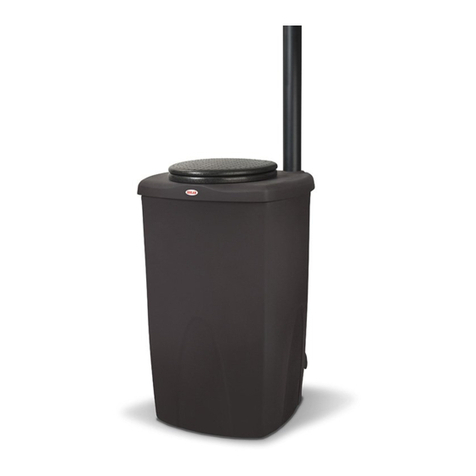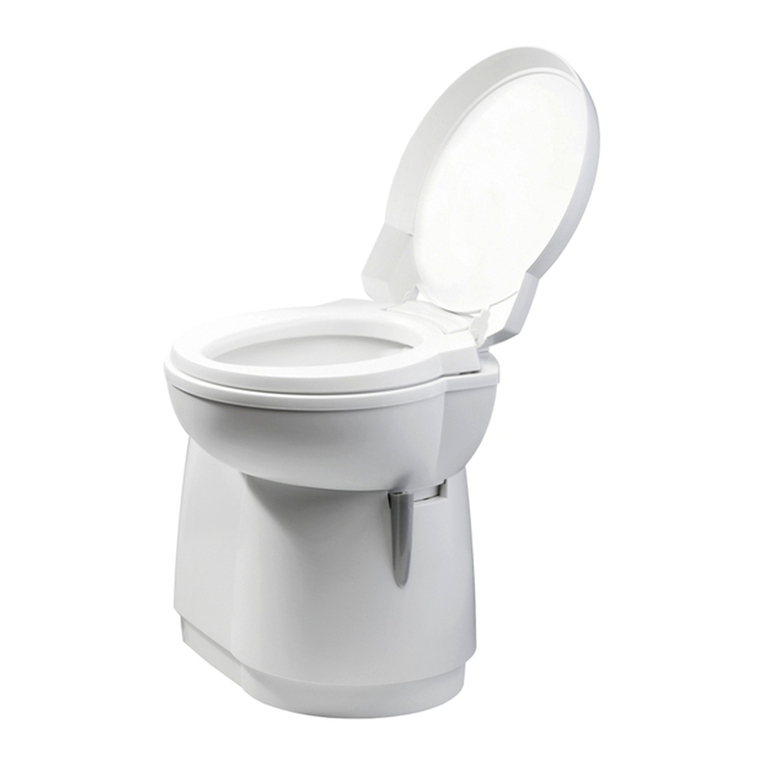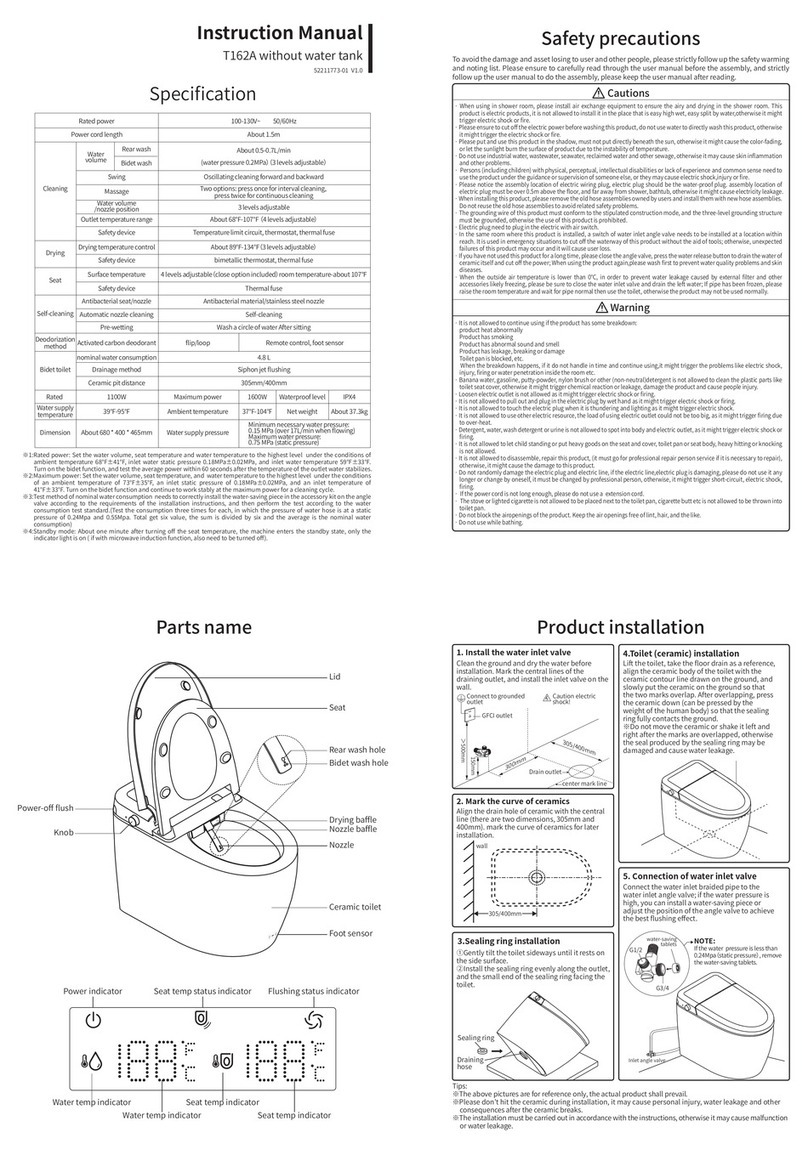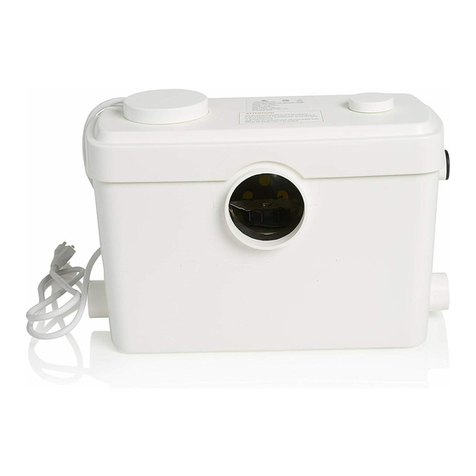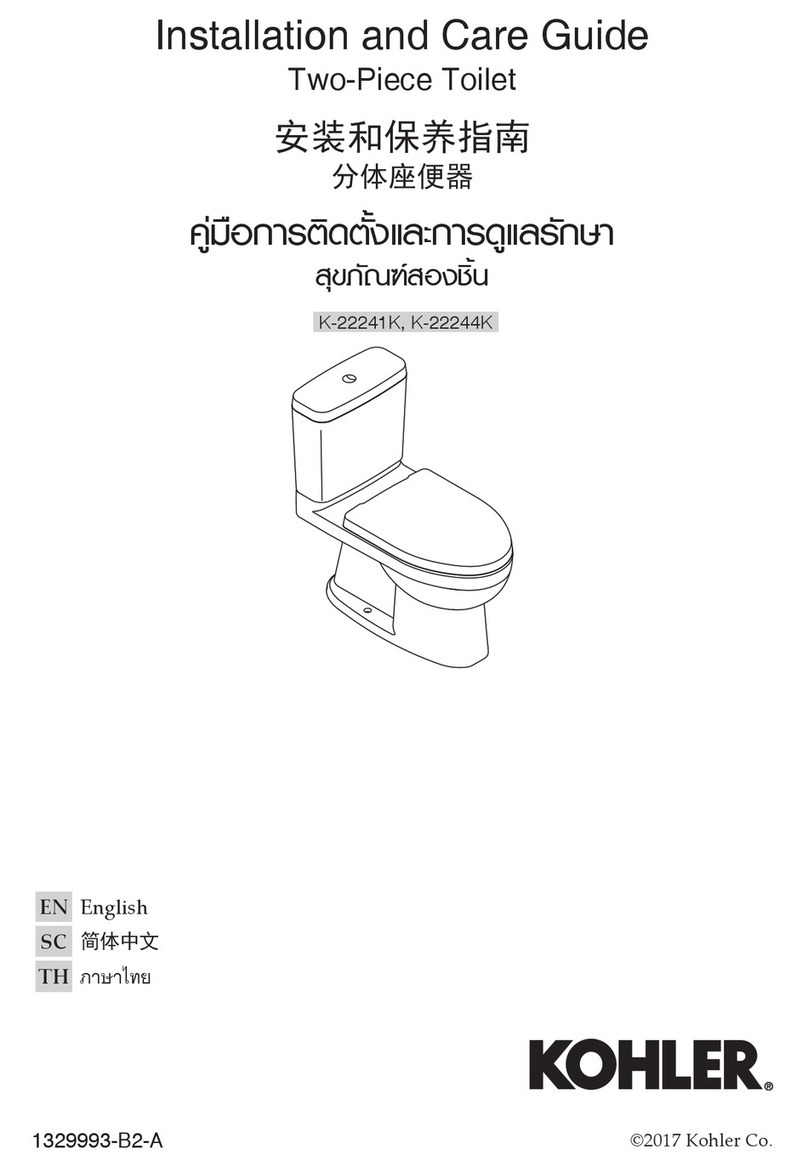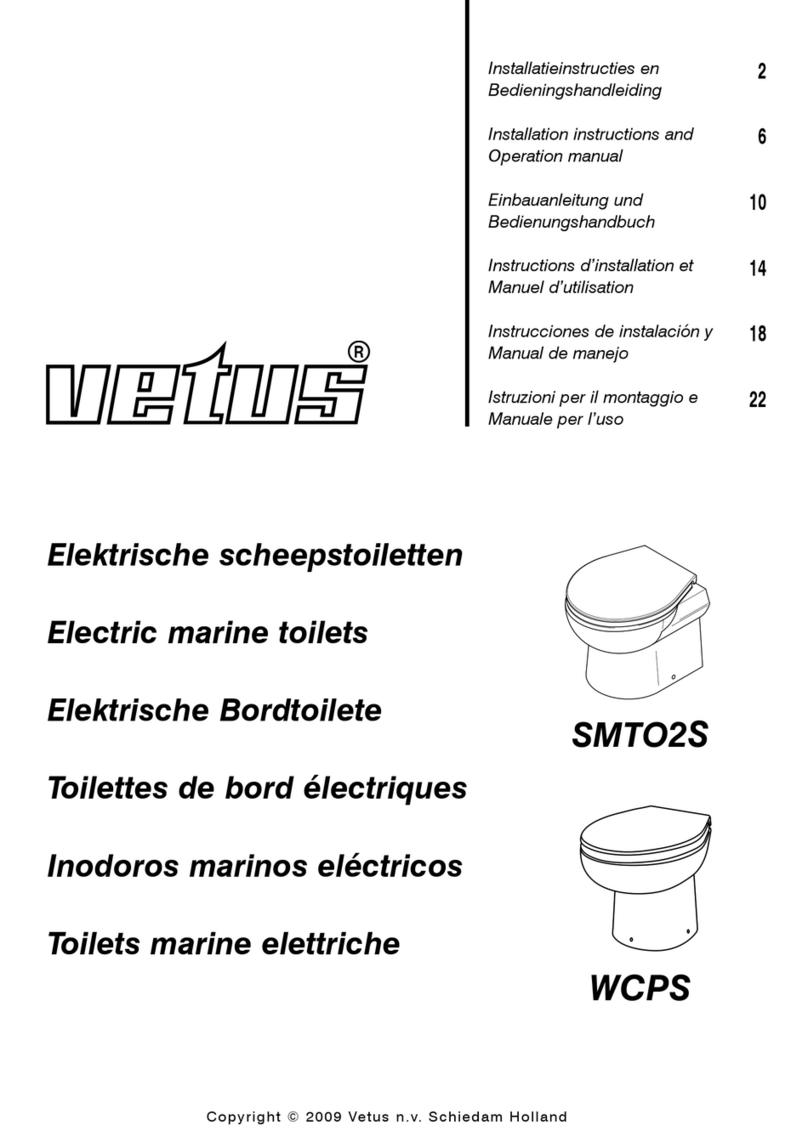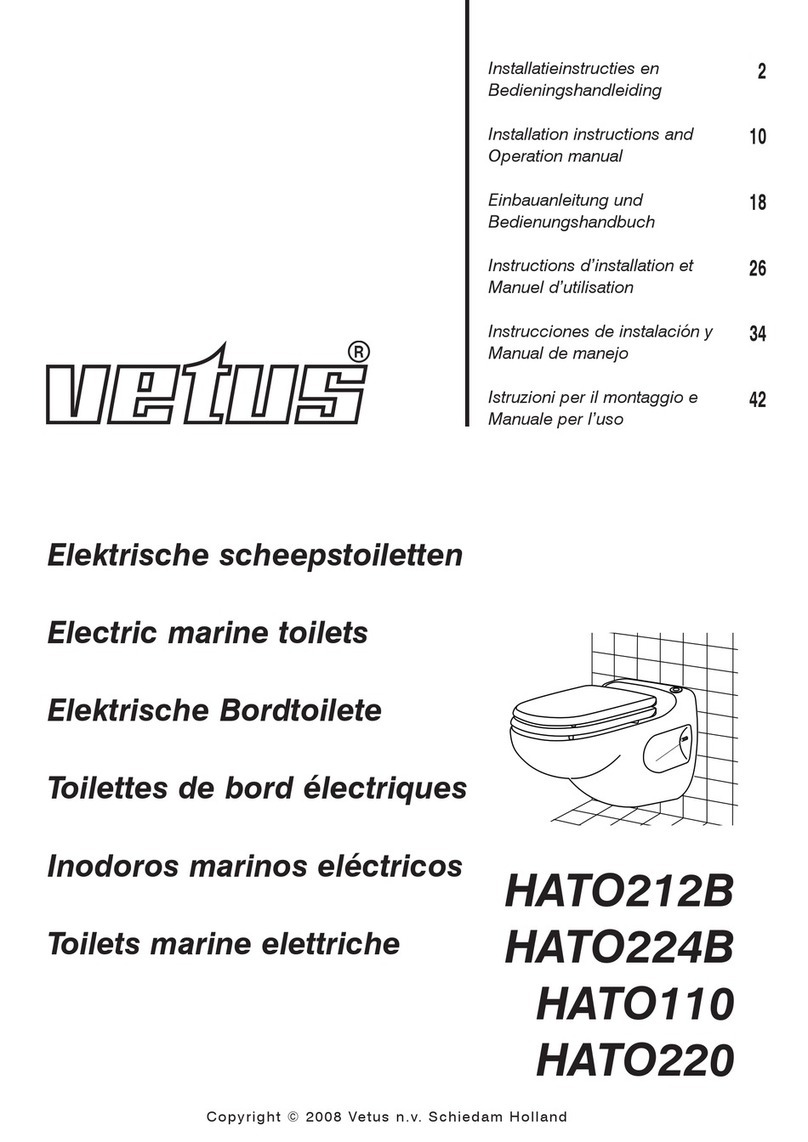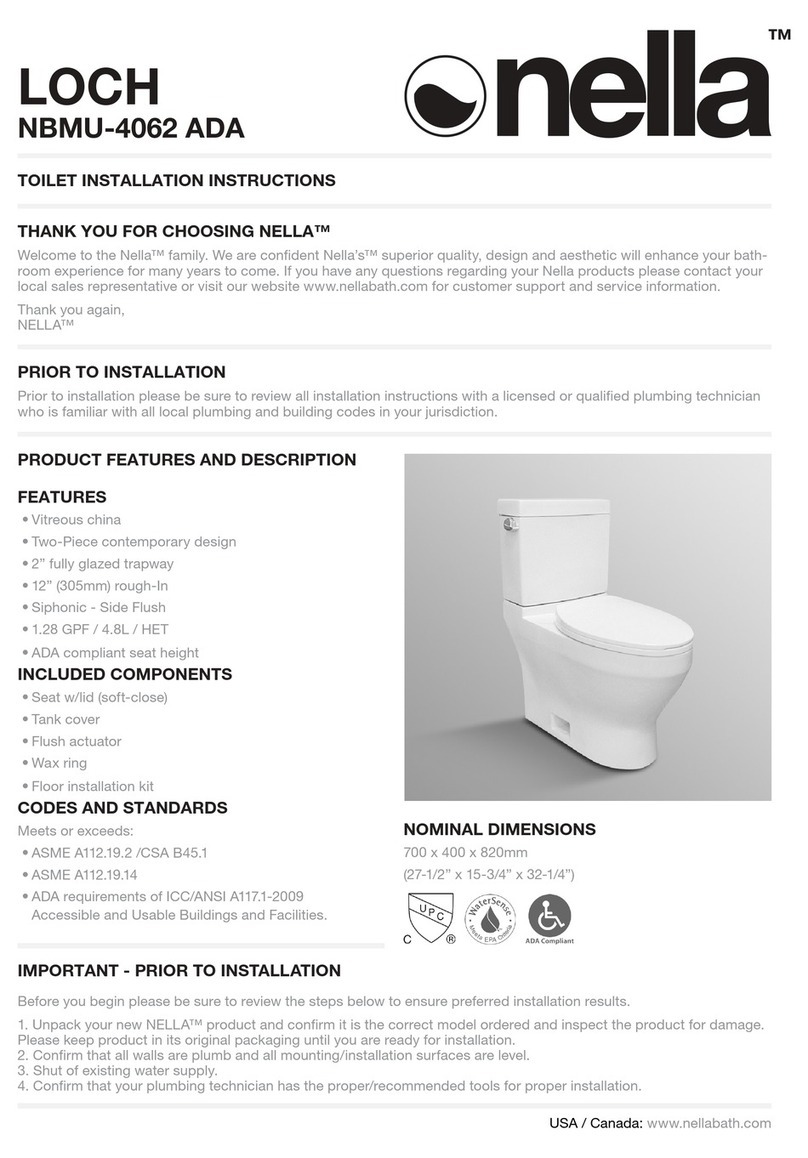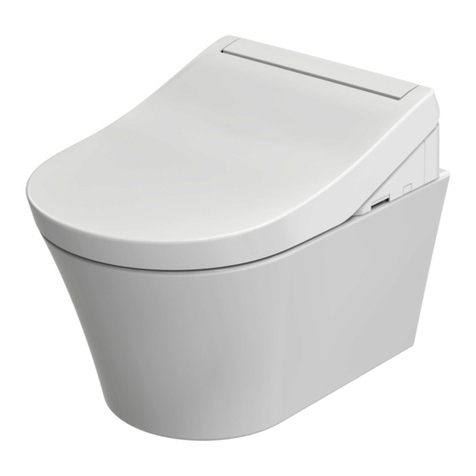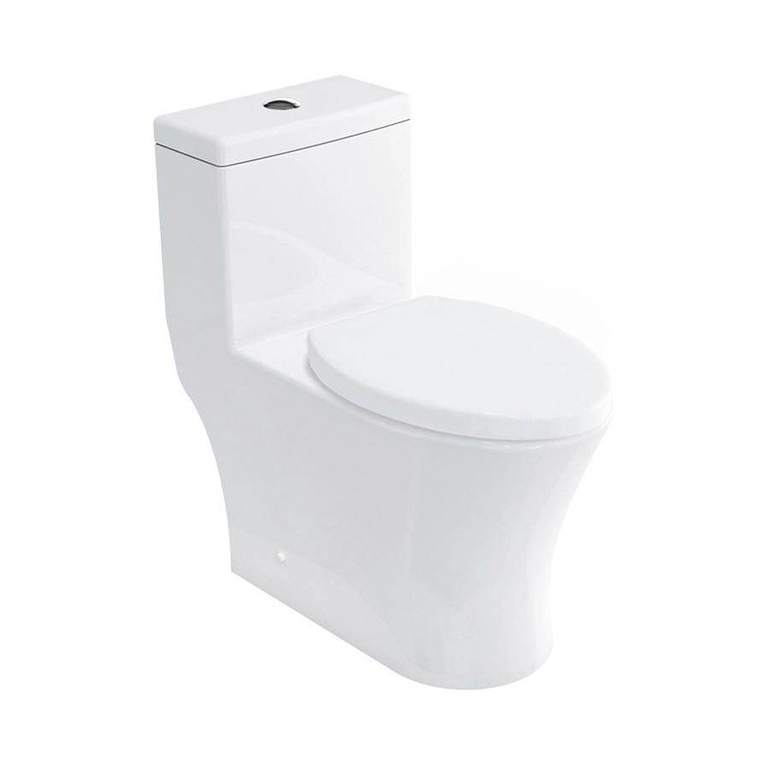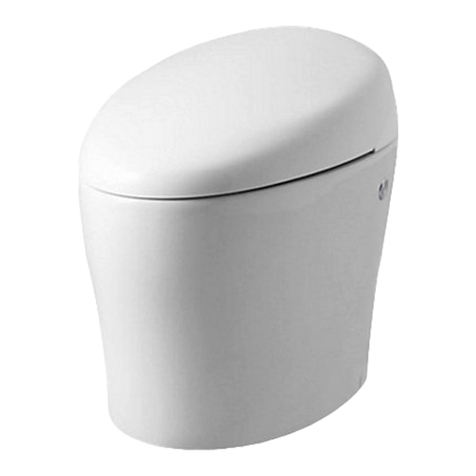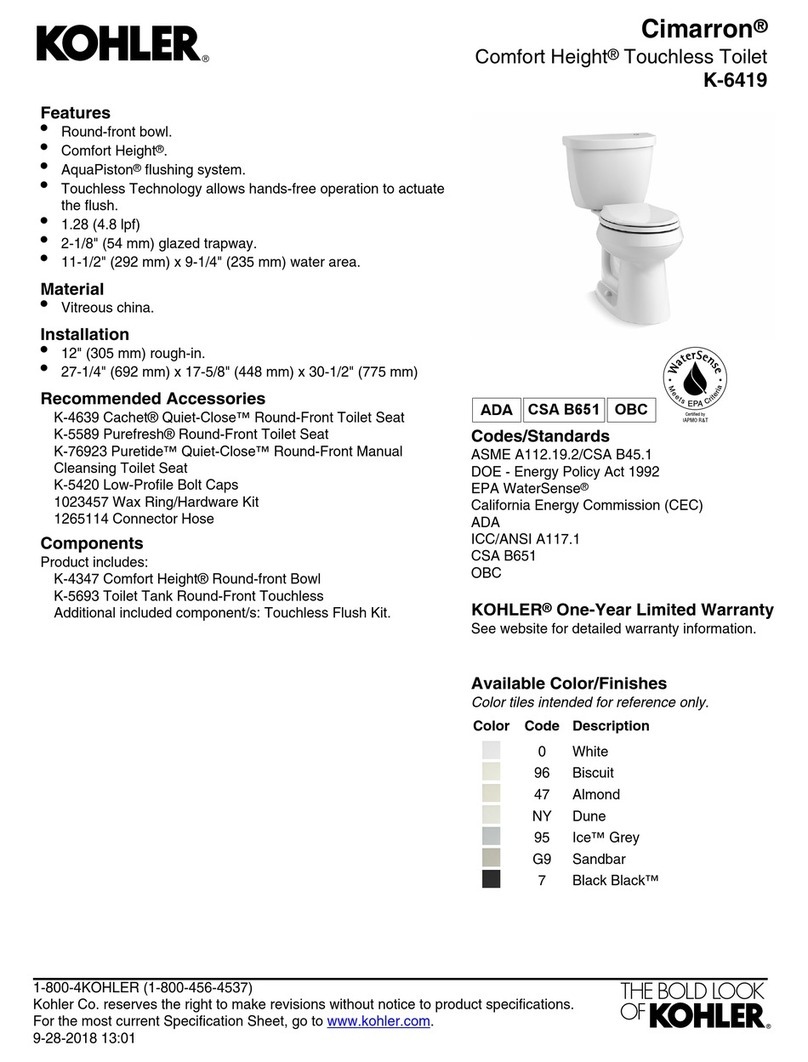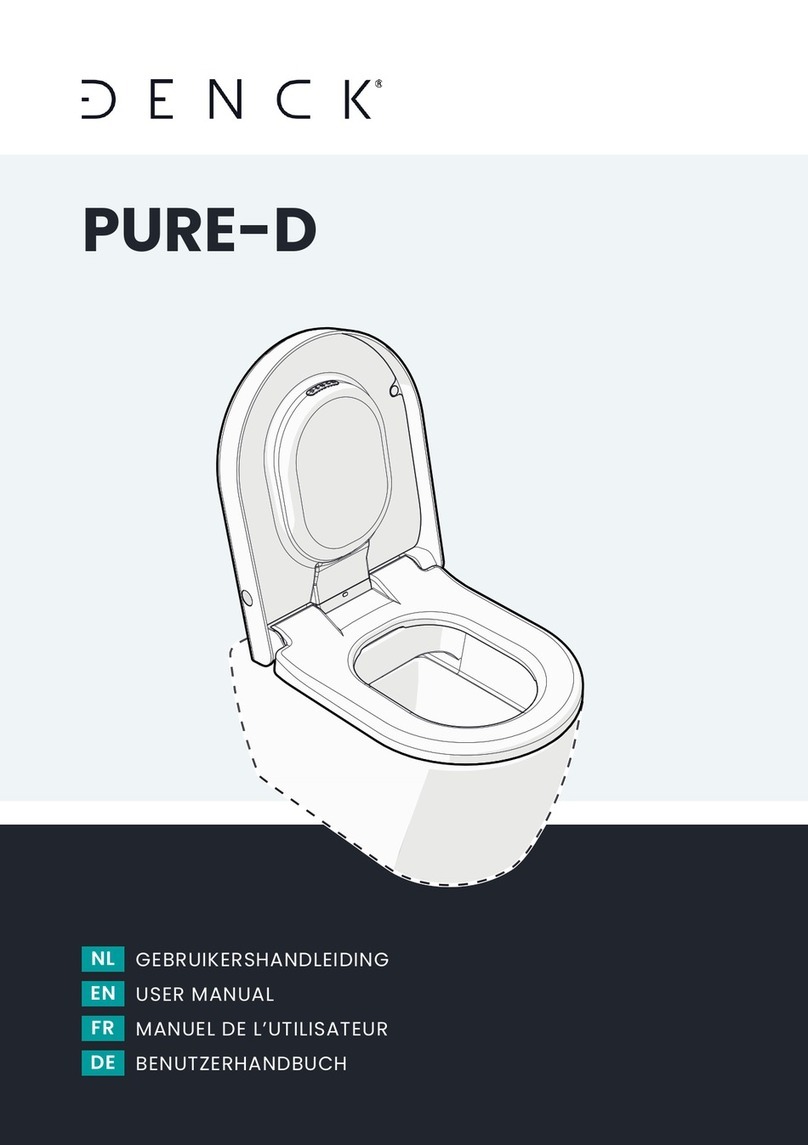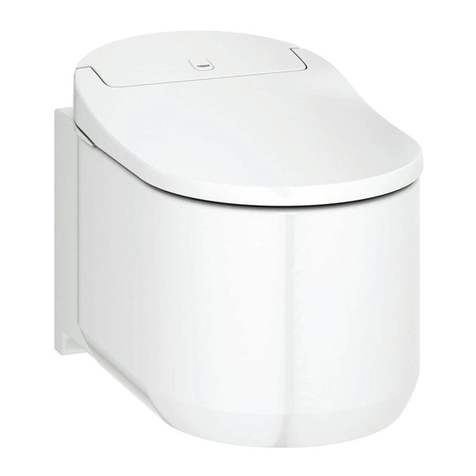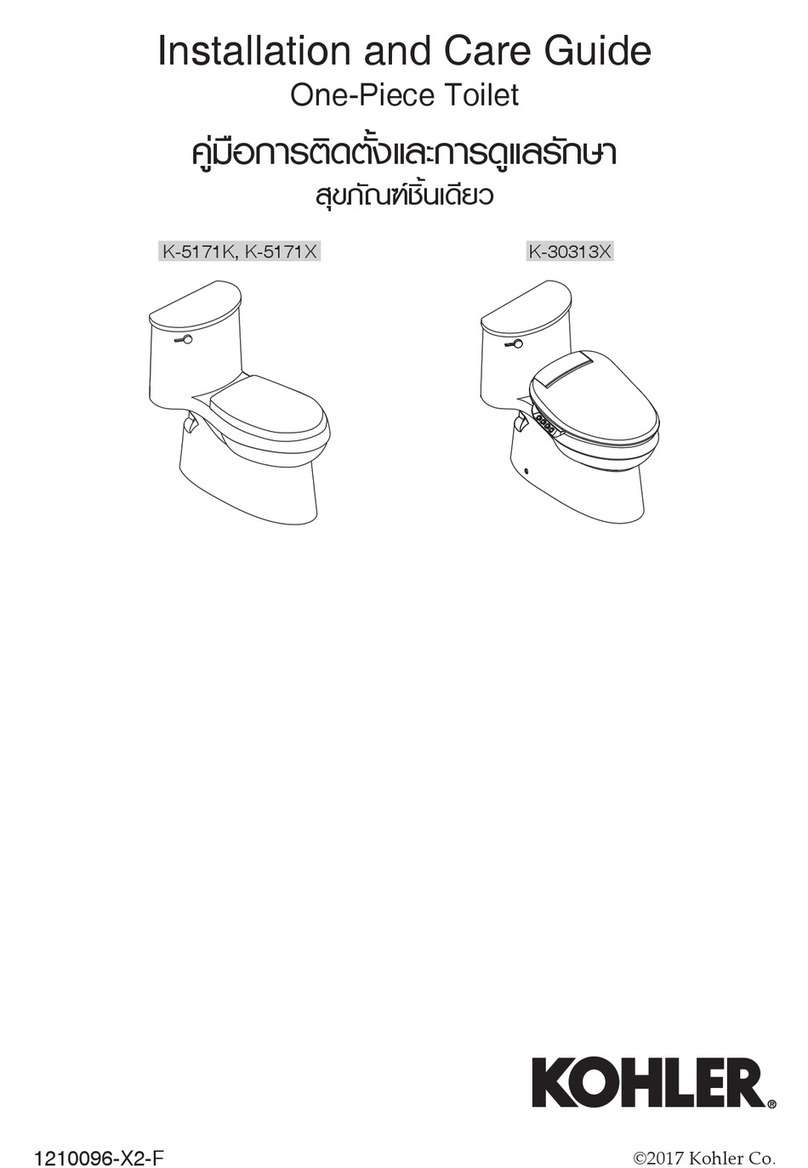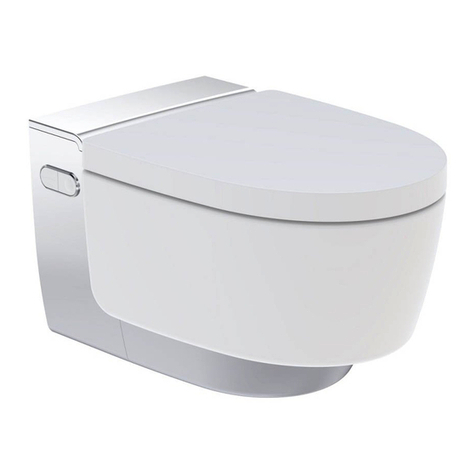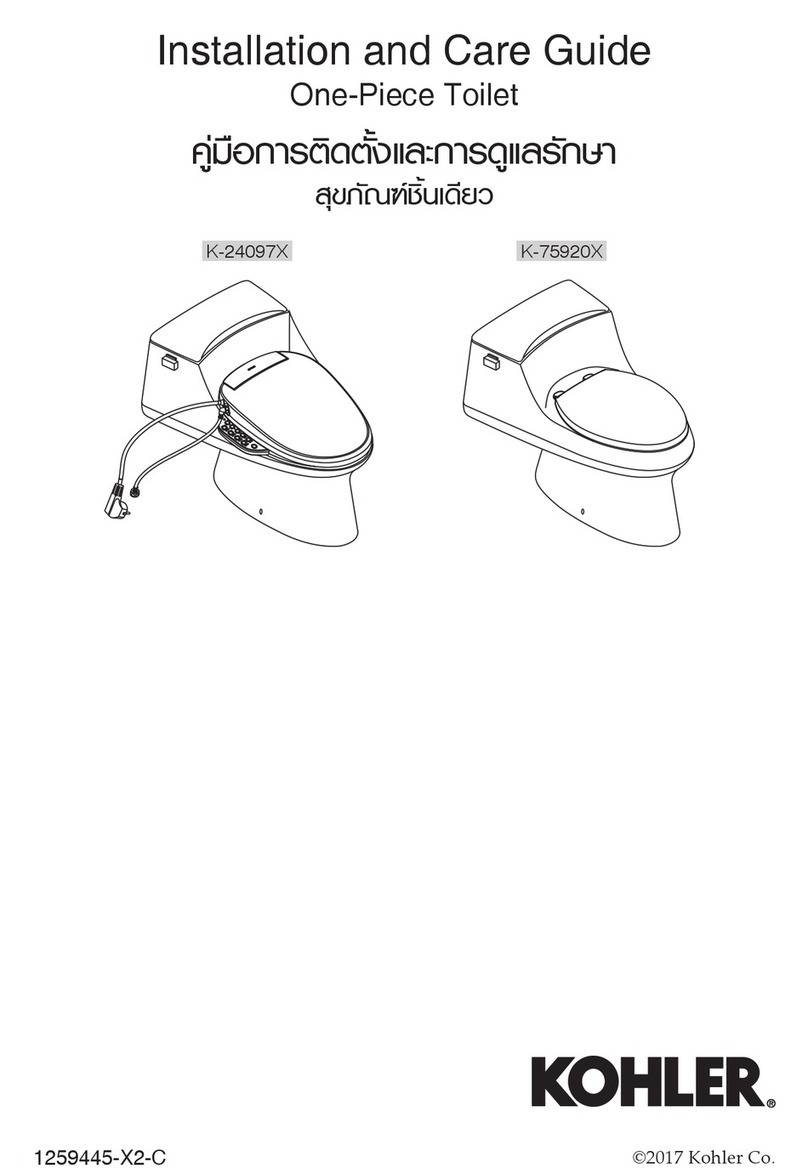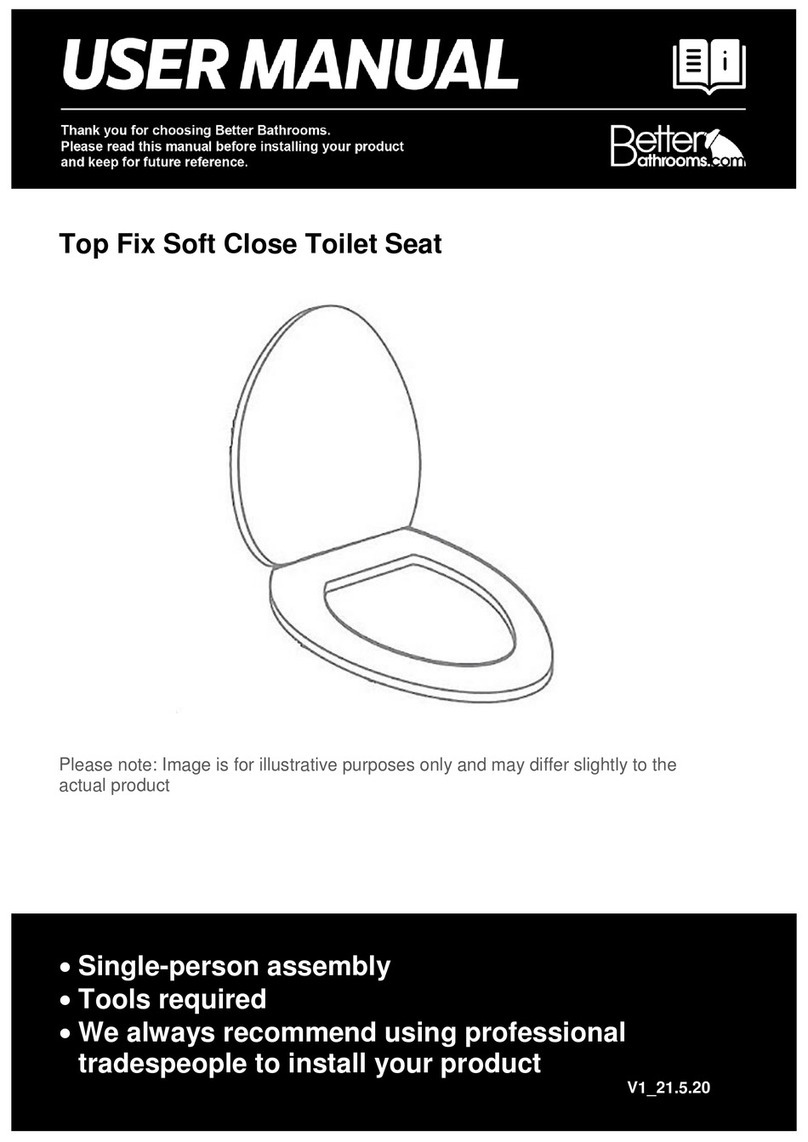
4110128.11 Installation manual HATO_C electric marine toilet
Sommaire Índice Indice
1 Sécurité .................................. 23
2 Introduction............................. 23
3 Installation............................... 23
3.1 Installation du cadre .................. 23
3.2 Installation électrique ................ 24
3.2.1 Système de 12 V ou 24 V. . . . . . . . . 24
3.2.2 Panneau de commande
(12 V / 24 V).......................... 24
3.2.3 Système de 110 V ou 230 V..... 24
3.3 Alimentation en eau .................. 24
3.4 Élimination des eaux usées ......... 25
3.5 Prévention du siphonnage.......... 25
3.6 Montage d'un faux mur.............. 25
3.7 Version de raccordement de 12/24
volts ........................................ 25
3.7.1 Sortie .................................. 25
3.8 Version de raccordement de
120/230 Volts ............................ 26
3.8.1 Drain................................... 26
3.8.2 Raccordement du tuyau......... 26
3.9 Raccords d'entrée et de sortie ..... 26
3.9.1 Sortie (Généralités)................ 26
3.9.2 Tuyau d'alimentation............. 26
3.10 Montage de la cuvette des toilettes 26
3.11 Essai ........................................ 26
3.12 Montage nal ........................... 26
4 Utilisation ................................ 27
4.1 Hivernage. . . . . . . . . . . . . . . . . . . . . . . . . . . . . . . . . 27
5 Entretien.................................. 27
6 Renseignements techniques...... 28
7 Recherche de pannes................ 28
1 Seguridad................................ 29
2 Introducción ............................ 29
3 Instalación ............................... 29
3.1 Instalación del marco ................. 29
3.2 Instalación eléctrica ................... 30
3.2.1 Sistema de 12 V o 24 V ........... 30
3.2.2 Panel de control (12 V / 24 V) .. 30
3.2.3 Sistema de 110 V o 230 V........ 30
3.3 Suministro de agua.................... 30
3.4 Sistema municipal
de alcantarillado........................ 31
3.5 Prevenir el sifón......................... 31
3.6 Montaje de una pared falsa......... 31
3.7 Versión de conexión de 12/24
voltios...................................... 31
3.7.1 Salida .................................. 31
3.8 Versión de 120/230 voltios de
conexión .................................. 32
3.8.1 Desagüe .............................. 32
3.8.2 Conexión de la manguera ...... 32
3.9 Conexiones de entrada y salida ... 32
3.9.1 Salida (general)..................... 32
3.9.2 Manga de repuesto ............... 32
3.10 Montaje del inodoro .................. 32
3.11 Prueba ..................................... 32
3.12 Montaje nal. . . . . . . . . . . . . . . . . . . . . . . . . . . . . 32
4 Uso. . . . . . . . . . . . . . . . . . . . . . . . . . . . . . . . . . . . . . . . . . 33
4.1 Invernalización.......................... 33
5 Mantenimiento ........................ 33
6 Especicaciones técnicas........... 34
7 Averías .................................... 34
1 Sicurezza ................................. 35
2 Introduzione ............................ 35
3 Installazione ............................ 35
3.1 Installare il telaio ....................... 35
3.2 Impianto elettrico...................... 36
3.2.1 Impianto da 12 V o 24 V ......... 36
3.2.2 Pannello di controllo
(12 V / 24 V).......................... 36
3.2.3 Impianto da 110 V o 230 V ...... 36
3.3 Erogazione acqua ...................... 36
3.4 Smaltimento delle acque reue ... 37
3.5 Impedire il sifonamento ............. 37
3.6 Montaggio di una controparete... 37
3.7 Collegamento versione 12/24 Volt 37
3.7.1 Presa ................................... 37
3.8 Collegamento versione
120/230 Volt ............................. 38
3.8.1 Scarico ................................ 38
3.8.2 Collegamento dei tubi........... 38
3.9 Connessioni ingresso e uscita...... 38
3.9.1 Uscita (generale)................... 38
3.9.2 Tubo di alimentazione ........... 38
3.10 Montare il water ........................ 38
3.11 Collaudo .................................. 38
3.12 Montaggio nale....................... 38
4 Funzionamento ........................ 39
4.1 Preparazione all’inverno ............. 39
5 Manutenzione.......................... 39
6 Dati tecnici............................... 40
7 Guasti...................................... 40
8 Dimensiones principales ........... 41
9 Ejemplo de instalación.............. 42
10 Capacidad de las baterías, cables
de baterías............................... 43
8 Dimensions principales ............. 41
9 Exemple d’installation............... 42
10 Capacité de la batterie, câbles
de batterie ............................... 43
8 Dimensioni principal................. 41
9 Esempio di installazione ........... 42
10 Batterikapacitet, cavi della
batteria ................................... 43

